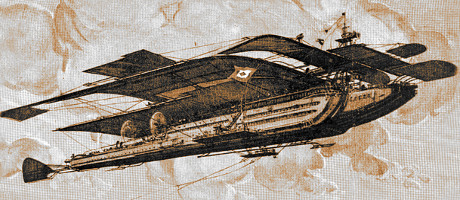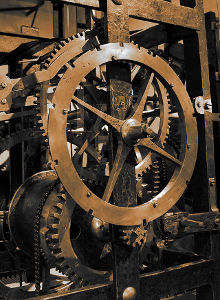Science

More has been learned in the past 100 years than in all the dark centuries following the fall of Marada. Yet, much of what is now known is simply a re-discovery of the secrets lost in the cataclysmic war of long ago. With the advent of steam and ichor locomotion, advanced alchemical reagents, gunjuice, aether manipulation, powered flight, and clockwork automatons, many believe the birth of a new empire of science and magic is at hand.
Industry
Most of the world’s goods are produced in mills, workshops, and smithies, which employ professional craftsmen, artisans, and apprentices. Although machines have improved the speed and quality of production, the many items are still handcrafted with skill and precision. Although the art of metallurgy is highly developed, alchemical metals and exotic alloys remain expensive. For this reason, the most common building materials are wood, brick, stone, and wrought iron. Large manufactories exist as well, and although manufactured goods are cheaper than their handcrafted counterparts, they are generally of lower quality. The most heavily industrialized nations are Kendes, Armillia, Tilsha, Suddaea, and the Baronies of Ambricar.
Clockwork Devices

Clockworks include devices such as clocks (obviously), pocket watches, music boxes, mechanical songbirds, and various kinds of toys and puzzles. More advanced clockwock devices include automatronic instruments, automatons, analytical engines, kinetoscopes, clockwork locks, clockwork tools, auto-rotors, and all manner of clockwork weaponry.
Still more advanced clockwork devices and one-off contrivances are built and used by those “conjurers of machines” who are more generally termed gearmeisters. Gearmeisters include analytical mechanics and machinists, innovative inventors, combat engineers, and anyone else possessing the skill, wit, and cleverness to repurpose even the most innocuous clockwork toy to an automated hunter-killer attack drone.
Industrial Machinery
Industrial machinery requires more than just the delicate clockworks used in simple machines. Industrial machinery requires much more power, usually from steam engines, batteries, or dynamos, but can also do a great deal more work. Industrial machinery is built of numerous parts, such as gears, cranks, cams, drive chains, axles, and pistons. Mills and shipyards use heavy machinery for lifts—conveyors, cranes, and other such things. Other forms of machines are widely deployed as engines and motors, like those seen in aeronefs, locomobiles, and juggernauts. Industrial machinery has no limit to its engineering. Massive mechanical contraptions have been constructed by engineers throughout the ages.